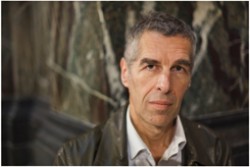
Vandenbroeck 1990b
“Jeroen van Aken en de stad ’s-Hertogenbosch” (Paul Vandenbroeck) 1990
[in: A.M. Koldeweij (ed.), In Buscoducis. Kunst uit de Bourgondische tijd te ’s-Hertogenbosch. De cultuur van de late middeleeuwen en renaissance. Bijdragen. Gary Schwartz-SDU, Maarssen – ’s-Gravenhage, 1990, pp. 394-402]
In this contribution Vandenbroeck systematically goes through a number of the results of his earlier publications. Bosch was a well-to-do burgher who apparently wanted to be independent financially and only accepted commissions when they fitted in with his own ‘ideological programme’. Furthermore there is a discrepancy between his high financial status and the ‘middle-class’ standards and values he cherished. A problem in this respect is the lack of historic research concerning the urban social topography in the Netherlands.
Bosch was also a ‘sworn member’ of the ’s-Hertogenbosch Fraternity of Our Lady, implying that he was a cleric (which means that he received one of the four lower ordinations and was still allowed to marry), that he had probably enjoyed an intellectual training, that he had a lot of social prestige and that he had enough money. Diego de Guevara, Felipe de Guevara’s father, was already a non-resident member of the Fraternity in 1498/99. Apparently the Fraternity did not play an important role as a patron for Bosch, but it may have brought him into contact with other patrons (Henry III of Nassau, Diego de Guevara…). A large number of Bosch’s works that we only know from copies, replicas or inventories were clearly intented for burghers. A problem here is once more the rarity of urban inventories from the south-east of what is now Holland for the period 1480-1520.
From a sociological point of view Bosch probably belonged to a progressive and intellectual circle of burghers. But there is (as has already been signalled above) a discrepancy between his very high financial status and his system of standards and values. According to Vandenbroeck Bosch’s standards and values were typical of a social group that was situated somewhat ‘lower’.
Reactions
In a short review of this contribution in Bijdragen tot de Geschiedenis [vol. 74 (1991), nr. 3 / 4, p. 214] H.G. pointed out: ‘Remarkably enough the author complains about the lack of research concerning urban stratification and social topography in the Netherlands whereas a study was already published in 1987 in which this gap was filled to an important degree for the city of ’s-Hertogenbosch’. This study is: Bruno Blondé, De sociale structuren en economische dynamiek van ’s-Hertogenbosch, 1500-1550. Bijdragen tot de geschiedenis van het Zuiden van Nederland – nr. 74, Tilburg, 1987.
[explicit]